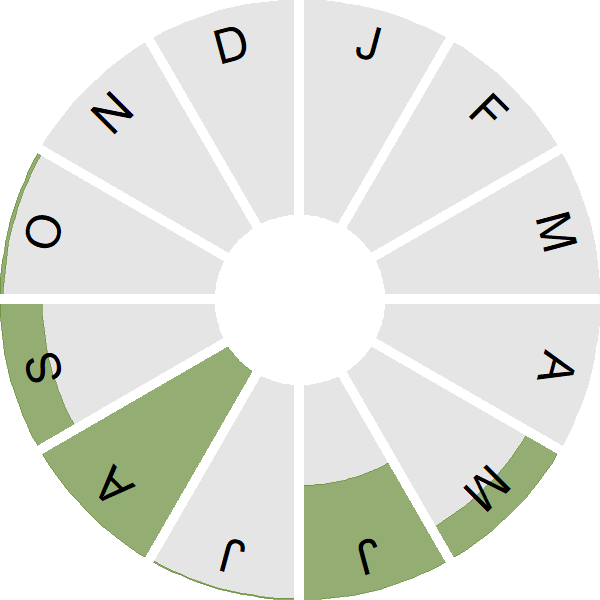Icterine Warbler
Introduction
Like a larger and more robust version of a Willow Warbler, this scarce autumn visitor from central Europe is increasingly also recorded in spring and has been recorded breeding.
Key Stats
Identification
Songs and Calls
Song:
Call:
Status and Trends
Conservation Status
Population Size
Population Change
Population trends of this scarce species are not routinely monitored.
Distribution
Most Icterine Warblers recorded in the UK are passage migrants but during Bird Atlas 2007–11
Occupied 10-km squares in UK
or view it on Bird Atlas Mapstore.
European Distribution Map
Distribution Change
Change in occupied 10-km squares in the UK
or view it on Bird Atlas Mapstore.
or view it on Bird Atlas Mapstore.
Seasonality
Icterine Warbler is a scarce passage migrant, with a pulse of spring records in late May and June sometimes involving singing birds. Autumn passage migrants are typically in August and September.
Weekly pattern of occurrence
The graph shows when the species is present in the UK, with taller bars indicating a higher likelihood of encountering the species in appropriate regions and habitats.

Movement
Britain & Ireland movement
Foreign locations of birds ringed or recovered in Britain & Ireland
Dots show the foreign destinations of birds ringed in Britain & Ireland, and the origins of birds ringed overseas that were subsequently recaptured, resighted or found dead in Britain & Ireland. Dot colours indicate the time of year that the species was present at the location.
- Winter (Nov-Feb)
- Spring (Mar-Apr)
- Summer (May-Jul)
- Autumn (Aug-Oct)

European movements
EuroBirdPortal uses birdwatcher's records, such as those logged in BirdTrack to map the flows of birds as they arrive and depart Europe. See maps for this species here.
The Eurasian-African Migration Atlas shows movements of individual birds ringed or recovered in Europe. See maps for this species here.
Biology
Productivity and Nesting
Nesting timing
Egg measurements
Clutch Size
Survival and Longevity
Survival is shown as the proportion of birds surviving from one year to the next and is derived from bird ringing data. It can also be used to estimate how long birds typically live.
View number ringed each year in the Online Ringing Report.
lifespan
Survival of adults
Survival of juveniles
Biometrics
Wing length and body weights are from live birds (source).
Wing length
Body weight
Ring Size
Classification, names and codes
Classification and Codes
- Order: Passeriformes
- Family: Acrocephalidae
- Scientific name: Hippolais icterina
- Authority: Vieillot, 1817
- BTO 2-letter code: IC
- BTO 5-letter code: ICTWA
- Euring code number: 12590
Alternate species names
- Catalan: busqueta icterina
- Czech: sedmihlásek hajní
- Danish: Gulbug
- Dutch: Spotvogel
- Estonian: käosulane
- Finnish: kultarinta
- French: Hypolaïs ictérine
- German: Gelbspötter
- Hungarian: kerti geze
- Icelandic: Spésöngvari
- Irish: Ceolaire Ictireach
- Italian: Canapino maggiore
- Latvian: iedzeltenais kaukis
- Lithuanian: paprastoji tošinuke
- Norwegian: Gulsanger
- Polish: zaganiacz (zwyczajny)
- Portuguese: felosa-amarela
- Slovak: sedmohlások obycajný
- Slovenian: rumeni vrtnik
- Spanish: Zarcero icterino
- Swedish: härmsångare
- Welsh: Telor Aur

